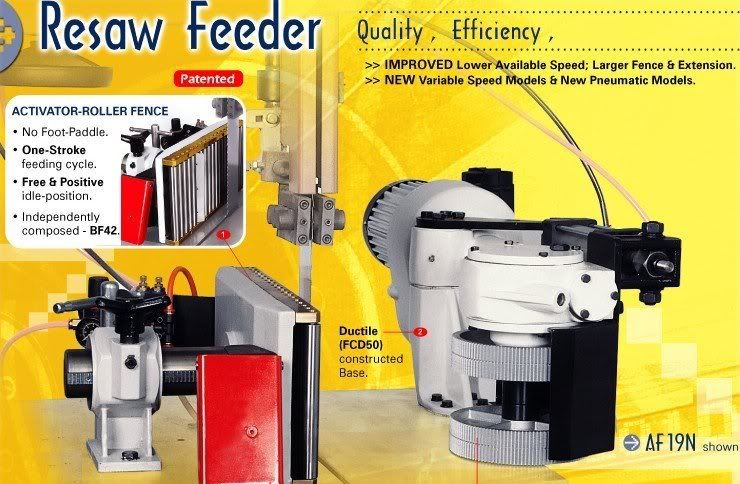- Joined
- 21 Jul 2006
- Messages
- 103
- Reaction score
- 0
I recently bought an old Startrite 352 BS which I'm using to cut my teeth - not literally, you understand.
An obvious first "upgrade" is going to be a decent blade or two, so many thanks for those who've already provided links and info on blades. Thanks also for the tracking thread.
However, I could do with advice on guides and fences. The existing block guides and thrust rods are in a fairly manky state, and I'm not convinced that dressing with a file (as I've seen posted somewhere) is going to sort them, or if I'm capable of doing it accurately. So before I lash out over a hundred quid for a new set, should I be looking at any alternatives? From what I've already read it seems that the blocks are as good as/better than rollers, and I can see that adjusting the block guides can be straightforward to those who are doing it often and have picked up the knack, but I suspect I'd prefer an easier adjustment method. I've seen some wincingly expensive guides (can't find them at the moment, but something like GL??) which would run close to £200 for the set, and some from Axminster at somewhere around the thirty quid mark, which makes me question whether they'd be any good. So is there anything else worth a look at around the £100 mark - and will they fit - or is my best course to simply stick with the standard items?
Fences next - The saw doesn't have a mitre guide, which I'd like to get. Can anyone tell me what I need to look for - is the slot standard (if there is a standard!) and any particular recommendations?
Finally a rip fence. The fence on the saw is certainly sturdy if crude, but I'd like to get something to run the full width of the table and with a decent adjustment mechanism. Again any advice on what I should be looking for would be gratefully received.
An obvious first "upgrade" is going to be a decent blade or two, so many thanks for those who've already provided links and info on blades. Thanks also for the tracking thread.
However, I could do with advice on guides and fences. The existing block guides and thrust rods are in a fairly manky state, and I'm not convinced that dressing with a file (as I've seen posted somewhere) is going to sort them, or if I'm capable of doing it accurately. So before I lash out over a hundred quid for a new set, should I be looking at any alternatives? From what I've already read it seems that the blocks are as good as/better than rollers, and I can see that adjusting the block guides can be straightforward to those who are doing it often and have picked up the knack, but I suspect I'd prefer an easier adjustment method. I've seen some wincingly expensive guides (can't find them at the moment, but something like GL??) which would run close to £200 for the set, and some from Axminster at somewhere around the thirty quid mark, which makes me question whether they'd be any good. So is there anything else worth a look at around the £100 mark - and will they fit - or is my best course to simply stick with the standard items?
Fences next - The saw doesn't have a mitre guide, which I'd like to get. Can anyone tell me what I need to look for - is the slot standard (if there is a standard!) and any particular recommendations?
Finally a rip fence. The fence on the saw is certainly sturdy if crude, but I'd like to get something to run the full width of the table and with a decent adjustment mechanism. Again any advice on what I should be looking for would be gratefully received.





